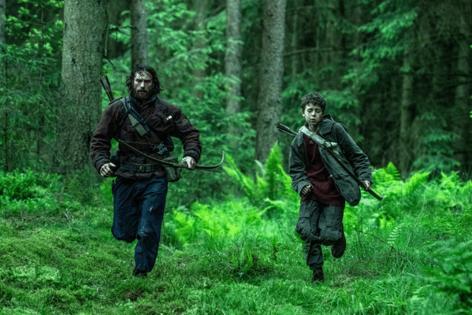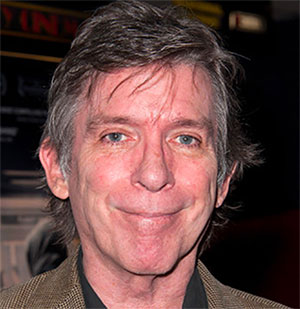'28 Years Later' review: Zombie threequel arrives with no clear direction
Published in Entertainment News
Like a bad case of Rage Virus, the zombie plague is back in "28 Years Later," the tonally erratic, structurally misbegotten third entry in the long-dormant "28 Days Later" film franchise, which, judging by these results, should have stayed undead.
Director Danny Boyle and screenwriter Alex Garland reunite after skipping the series' second entry, 2007's "28 Weeks Later." "28 Years" is in many ways a throwback to the first film's style, with a visual aesthetic that recalls the early 2000s — the first film was shot on early digital video, the new one on iPhones — and an over-reliance on throwback Bullet Time-style thrills that were wowing filmgoers and gamers around the turn of the century but have since been rendered passé. It's a movie that seems designed to enrage viewers rather than engage them.
After an introduction which juxtaposes footage of "Teletubbies" with blood-vomiting zombies in the most thuddingly obvious of ways, we join life on a British island where a group of survivors lives safely from the threat of the Rage Virus, which turns the infected into psychotic, hyper-caffeinated and very unclothed zombie predators.
Among these villagers — who live a primitive existence, free from Wi-Fi, smartphones or TikToks from the Costco Guys — are Jamie (Aaron Taylor-Johnson), a scavenger type, his 12-year-old son Spike (Alfie Williams), and his wife Isla (Jodie Comer), who is bedridden with an unidentified illness.
Spike is now of the age where he gets to land his first kill, so Jamie takes him across a causeway, which only surfaces during the low tide, to the mainland so he can bag his very own zombie. It's considered a rite of passage for boys his age, like a deer hunting trip with dad but with humans, or at least the formerly human, as the prey.
Bow and arrow aimed, target locked, Spike gets his kill on a crawling, bloated breed of zombie who poses no more threat than an overgrown groundhog. But things get a bit hairier than expected, and Spike and his father are chased inland and forced to evade an impromptu zombie attack by hiding out in a house overnight for safety. Worse, they've been eyed by an Alpha, a sort-of superzombie who is bigger and stronger than his zombie brethren, who once he fixes on a target, or targets, has all the time in the world to wait them out.
An eventual chase back across that causeway makes the film's most straightforward and satisfying action sequence, but once Jamie and Spike return to the island, the film abruptly shifts its focus toward Isla, whose condition is worsening. And it's up to Spike to get her help, which means a return to the mainland, which we know is crawling with the infected and will be fraught with peril.
Screenwriter Garland, one of today's most provocative filmmakers in his own right — he made "Civil War" and this year's unnervingly intense "Warfare" — creates a world that questions what it means to be alive and what is worth living for, zombie apocalypse or no. Far from an apolitical filmmaker, he draws parallels to Britain's current Brexit situation. And he also helps answer the eternal question of whether the spawn of a zombie mother is, itself, born a zombie. (You may be surprised at the answer!)
But nothing in "28 Years Later" flows naturally or kinetically. Boyle, the daring and audacious auteur behind "Trainspotting," "Slumdog Millionaire" and "127 Hours," seems to be repeating himself here, if not imitating himself. He gives the film a glitchy digital gloss that sometimes causes hiccups in the playback, like a CD skipping. He incorporates reels of stock footage (as well as scenes from "Henry V") that add to the noise of the film but don't help with the narrative lulls or inconsistency. An abandoned Shell station with the "S" missing is what passes for clever.
The third act arrival of Ralph Fiennes as an iodine-doused doctor and the architect of a temple of human remains pushes the film in an entirely different direction, which is to say nothing of the ending of the movie, which doesn't so much wrap up "28 Years" as it does introduce the next chapter in the series. (There are, in fact, two more "28" movies in the works, because these days, a franchise never stays dead for long.)
Of the actors, young Alfie Williams is given the most to do, and he has a strong presence, with eyes full of innocence and a core of inner strength that reveals itself over the course of the movie. Fiennes is quite good too, even though he seems to be on his own island, in his own movie.
But it's hard to see "28 Years Later" as anything other than a disappointment. The original film helped revive the zombie genre and brought postapocalyptic fears into our modern era. (The first film, released in the wake of 9/11, played on our collective new world anxieties.) "28 Weeks" changed hands — it was directed by Juan Carlos Fresnadillo — but continued the series' momentum, even if its storylines have been disregarded here.
"28 Years Later," by comparison, feels like a regression. It's an uneven mix of horror movie gnarliness and human melancholia that never finds even ground or a consistent tone, and may make viewers reel from genre whiplash. It's a zombie movie that's not so much dead as it is listless.
———
'28 YEARS LATER'
Grade: D
MPA rating: R (for strong bloody violence, grisly images, graphic nudity, language and brief sexuality)
Running time: 1:55
How to watch: In theaters June 20
———
©2025 The Detroit News. Visit detroitnews.com. Distributed by Tribune Content Agency, LLC.













Comments